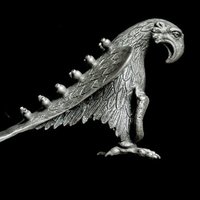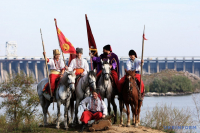The legend of Cossack treasures
Treasures in those days could be personal and common (treasury of Zaporizhzhia troops). In the 1630s and 1640s, while serving in the Polish army, the French military engineer Boplan was in Ukraine.
“Each Cossack has a secret corner on the islands. Returning from the next battle with the Turks, they shared the good in the treasury and buried everything they received in the Dnipro, except for those that can be damaged by water,” the engineer wrote. Boplan claimed that the Cossacks hide under water not only Turkish guns, but also money, for which they return only if necessary.
In 1775, the Zaporizhzhia Sich was liquidated by order of Catherine II. Cossacks were forcibly relocated to the Kuban. Leaving Khortytsia, the Cossacks did not believe in the eternity of this order. Many had the thought: ".. as Potemka (Prince Potemkin) dies, they will come back."
Thinking this way, the Cossacks walked and did not take anything with them, but buried the good: some to the ground, some to the rock, and some to the waters of the Dnipro.
New legends and myths about buried treasures were born, which were passed from mouth to mouth. Cossacks settled in different villages and cities of Ukraine, for many years, who died, who grew old and weak, and could no longer return to the Zaporizhzhia region. Oral wills and signs of buried treasures were transmitted with great secret from grandfather to father, from father to son.
Centuries have passed since the days of the turbulent Cossack life in the Zaporizhzhia Territory, and the passion for treasures does not pass. Searchers explore the rocks, diving enthusiasts comb through the bottom of the Dnipro and the rivers flowing into it meter by meter. On Khortytsia and the banks of the Dnipro in Zaporizhzhia periodically conduct official archaeological research. However, on Khortytsia and the banks of the Dnipro in Zaporizhzhia, most of the territory is still unknown. This land can rightly be called an inexhaustible source of discoveries for historians, archaeologists.


